Nutrient-dense foods are a vital feature of the Paleo diet, and focusing on nutrient density (see The Importance of Nutrient Density) is essential for making sure our bodies get everything they need from our food! We all know that a mix of quality meat, seafood, eggs, vegetables, fruits, nuts, and seeds is the basis for the Paleo diet, and can have amazing health benefits when balanced correctly (see What is the Paleo Diet?, The Diet We’re Meant to Eat, Part 3: How Much Meat versus Veggies? and Carbs Vs. Protein Vs. Fat: Insight from Hunter-Gatherers). But some Paleo foods, like kale and liver, are true heavy hitters—and those nutrient powerhouses are things we should be absolutely sure to include in our diets!
Table of Contents[Hide][Show]
Here are a few simple ways we can maximize our body’s nutrient intake!
1. Eat more organ meat!
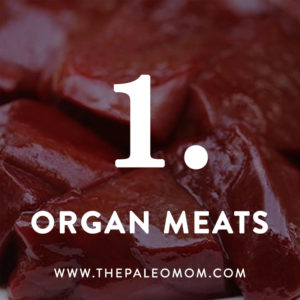 In traditional cultures, organ meats were treated like gold reserved for only the highest echelons of society—and they were definitely on to something! Organ meat is the most concentrated source of just about every nutrient, including important vitamins, minerals, healthy fats and essential amino acids (see The Best Foods and Nutrients to Support Liver Detox and Why Everyone Should Be Eating Organ Meat).
In traditional cultures, organ meats were treated like gold reserved for only the highest echelons of society—and they were definitely on to something! Organ meat is the most concentrated source of just about every nutrient, including important vitamins, minerals, healthy fats and essential amino acids (see The Best Foods and Nutrients to Support Liver Detox and Why Everyone Should Be Eating Organ Meat).
Organ meats are some of the most nutrient-dense foods available to us and they can provide essential benefits for the immune system, joint health, connective tissue health, cardiovascular health, hormone health and digestive health. Yet, most people who eat a Standard American Diet don’t consume any organ meat at all, and that means they miss out on all of the amazing benefits packed into these fantastic foods!
If you’re living on a tight budget, organ meat can be an excellent way to incorporate grass-fed meat into our diet while keeping our spending in check (see “If I Can’t Always Afford Grass-Fed Beef, What Should I Buy?”). Even grass-fed organ meat can be significantly cheaper than muscle meat. I recommend including organ meat into our diets at least twice a week, but the more we can incorporate this nutrient-packed protein the better!
If you don’t like liver or other organ meats, you are definitely not alone! I’ve posted several recipes with delicious ways to hide liver from yourself including Turkish (Hidden Liver) Meatballs with Paleo Cacik, Egg-Free, Tomato-Free (Hidden Liver) Paleo Meatloaf,Paleo Steak and Kidney Pie and Barbecued Beef Heart Kebabs. The spices in these recipes do a nice job of masking the…um…unique taste of these essential foods.
And if organ meat is just a complete non-starter for you, see Three Painless Ways to Eat Your Liver and consider investing in whole-food supplements like Organic 3 Beef Liver Capsules.
2. Eat More Seafood
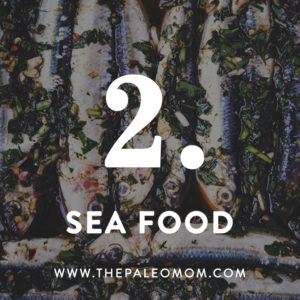 Seafood—including fish, shellfish and sea vegetabes—is some of the most nutrient-dense food available. Plus, it’s just plain delicious! The amazing news is that varieties of seafood are nearly boundless, and each has unique nutritional benefits!
Seafood—including fish, shellfish and sea vegetabes—is some of the most nutrient-dense food available. Plus, it’s just plain delicious! The amazing news is that varieties of seafood are nearly boundless, and each has unique nutritional benefits!
Fish is very high in omega-3 fatty acids (specifically DHA and EPA, see What About Fat?), protein that is very easy for our bodies to digest, vitamin D, vitamin A, iron, selenium and many other essential nutrients that aren’t as abundant in other foods (see The Importance of Fish in Our Diets and The Mercury Content of Seafood: Should we worry?). Wild-caught saltwater fish have the highest concentrations of vital nutrients, but farmed and freshwater fish are also excellent. For diets that include rich sources of omega-6 fats (like lots of nuts, see Paleo Without Nuts), think about focusing more on oily, cold-water fish for their high omega-3 content. Eating fresh, frozen, or canned whole fish (such as sardines, tuna or canned salmon, which are definitely the cheapest options) are all great choices! Think about 3-5 servings of fish per week as a starting place; there’s no reason why fish can’t be enjoyed daily!
Many people are surprised to learn about the amazing nutritional benefits of shellfish. Bivalves, including oysters, clams and mussels, are shellfish with a hinged, two-part shell. These tiny shellfish pack a nutrient punch that almost rivals that of liver! Oysters are a great source of vitamin D, vitamin B12, copper, zinc, and selenium. They support bone health as well as helping with the production of red blood cells, maintaining nerve cell and immune health, supporting thyroid function, and protecting the body against damage from free radicals. Clams have particularly high levels of vitamin B12, iron, selenium, and manganese which allows them to aid in nerve and blood cell health, treating or preventing iron-deficiency anemia, protecting against cellular damage, forming connective tissue and sex hormones, and supporting carbohydrate and fat metabolism. Scallops also have high levels of micronutrients that help synthesize DNA, enhance nerve and blood cell health, protect cells from free radical damage, boost immune health, and build healthy skeletal tissue. Mussels are great for supporting cellular health, DNA synthesis, fat and carbohydrate metabolism, connective tissue and bone health, and blood sugar regulation. Unless you have an allergy to them, bivalves are an amazing nutrient resource that we should all be tapping into at least once per week! For more details about all of the micronutrients packed into these shells see: Oysters, Clams, and Mussels, Oh my! Nutrition Powerhouses or Toxic Danger?
While sea vegetabes are rich in essential minerals and vitamins—iodine, calcium, magnesium, iron, potassium, chromium, selenium, zinc, B vitamins, vitamin C, vitamin E and vitamin K to name a few!—the more compelling reason to include sea vegetables at least weekly in a nutrient-focused diet is the dozens of additional trace minerals, many of which are depleted in modern soils and therefore insufficiently found in vegetables and fruit (see Why Seaweed is Amazing!). If jumping into Seaweed Salad isn’t your thing, try replacing salt both for cooking and at the table with one that includes sea vegetables flakes too.
3. Eat tons (and tons and tons) of veggies!
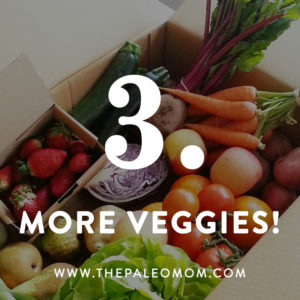 Anyone who has followed my writing knows that I recommend “eating the rainbow and plenty of it” when it comes to vegetable consumption (see The Importance of Vegetables, The Amazing World of Plant Phytochemicals: Why a diet rich in veggies is so important!, The Diet We’re Meant to Eat, Part 3: How Much Meat versus Veggies? and Carbs Vs. Protein Vs. Fat: Insight from Hunter-Gatherers). While some vegetables are nutrient powerhouses, like kale, other vegetables contain a unique set of vitamins and minerals that often vary based on the color. A huge part of the Paleo diet is eating a variety of vegetables of all colors to maximize our nutrient intake and the health benefits of all these delicious veggies! So, which veggies can help you scoop up which nutrients?
Anyone who has followed my writing knows that I recommend “eating the rainbow and plenty of it” when it comes to vegetable consumption (see The Importance of Vegetables, The Amazing World of Plant Phytochemicals: Why a diet rich in veggies is so important!, The Diet We’re Meant to Eat, Part 3: How Much Meat versus Veggies? and Carbs Vs. Protein Vs. Fat: Insight from Hunter-Gatherers). While some vegetables are nutrient powerhouses, like kale, other vegetables contain a unique set of vitamins and minerals that often vary based on the color. A huge part of the Paleo diet is eating a variety of vegetables of all colors to maximize our nutrient intake and the health benefits of all these delicious veggies! So, which veggies can help you scoop up which nutrients?
Nutrivore Weekly Serving Matrix
An easy-to-use and flexible weekly checklist
to help you maximize nutrient-density.
The Weekly Serving Matrix is very helpful! I’ve been eating along these lines but this really helps me know where to focus vs. which foods serve a more secondary role. It’s super helpful and has taken a lot of worry out of my meal planning. Thanks!
Jan
Carotenoids (including Vitamin A) are antioxidants vital to our bodies’ immune system function. The vegetables most rich in carotenoids include anything red, orange, yellow, or dark green which makes carrots, beets, squash, sweet potato, bell peppers, kale, spinach, collard greens, and broccoli. Tomatoes (yes, I know they’re a fruit!) are also a great source of carotenoids, specifically lycopene. If you can eat nightshades like tomatoes, then they are a great source of vital antioxidants. Carrots, beets, sweet potatoes are also rich in vitamin B as well as artichoke, asparagus, okra, broccoli, and green pepper, leafy green vegetables, mushrooms and cauliflower. Vitamin B is great for our cell metabolism, immune system, and nervous system function. Many of these vegetables are also strong sources of vitamin C, vitamin K, calcium, chromium, copper, iron, magnesium, manganese, potassium, sulfur, and zinc.
When it comes to committing to Paleolithic nutrition, eating a variety of vegetables is vital to getting the nutrients that our bodies need. The best solution in the war against veggie boredom is to head to our local market or store and try a few new veggies (see “But I’m Bored of Vegetables”)! Kale, for instance, is a nutrient-packed superfood that can be enjoyed raw in a salad, chopped into soup or stew, or even made into kale chips. Even our favorite vegetables can take on a whole new flavor with a different preparation or a new recipe. Have you ever tried Curry Cream of Carrot Soup? What about a delicious Chicken Pot Pie? The best thing for our bodies is to eat a mix of raw and cooked vegetables (see Vegetables: To Cook or Not To Cook?) and to “eat the rainbow” in order to enjoy a variety of vital nutrients. Simply incorporating a different vegetable into your meals can be a great start to upping your nutrient game!

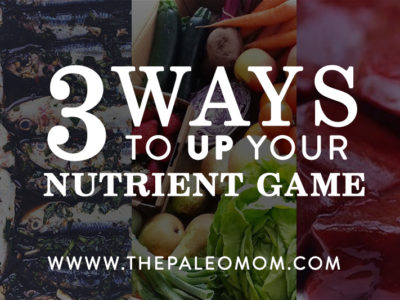
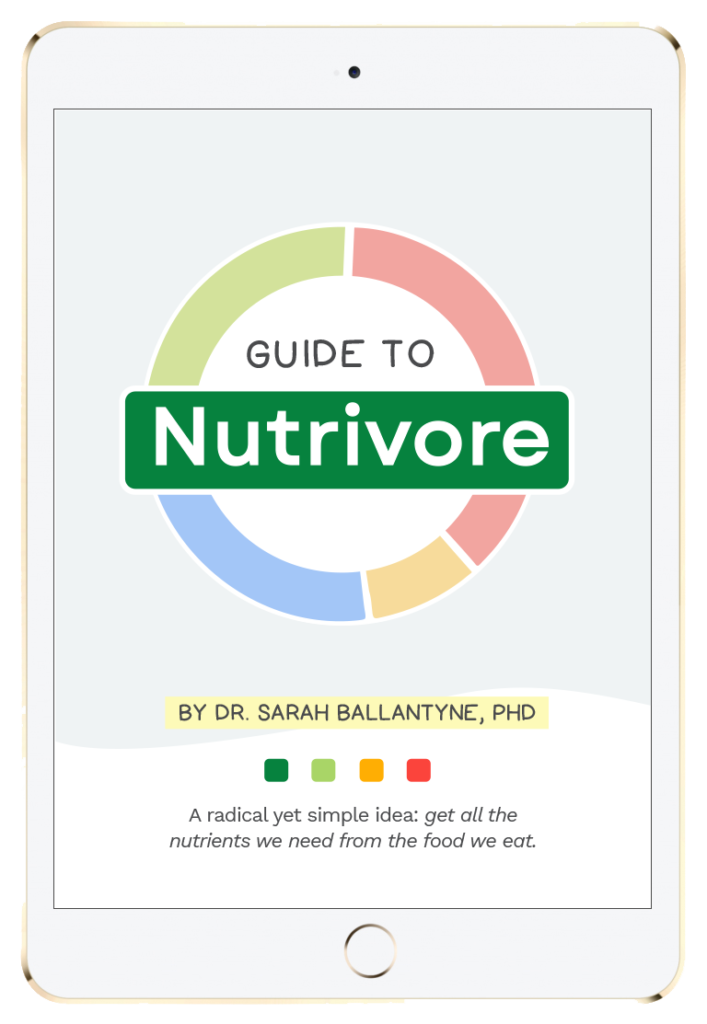



 Simple Fennel Salad
Simple Fennel Salad